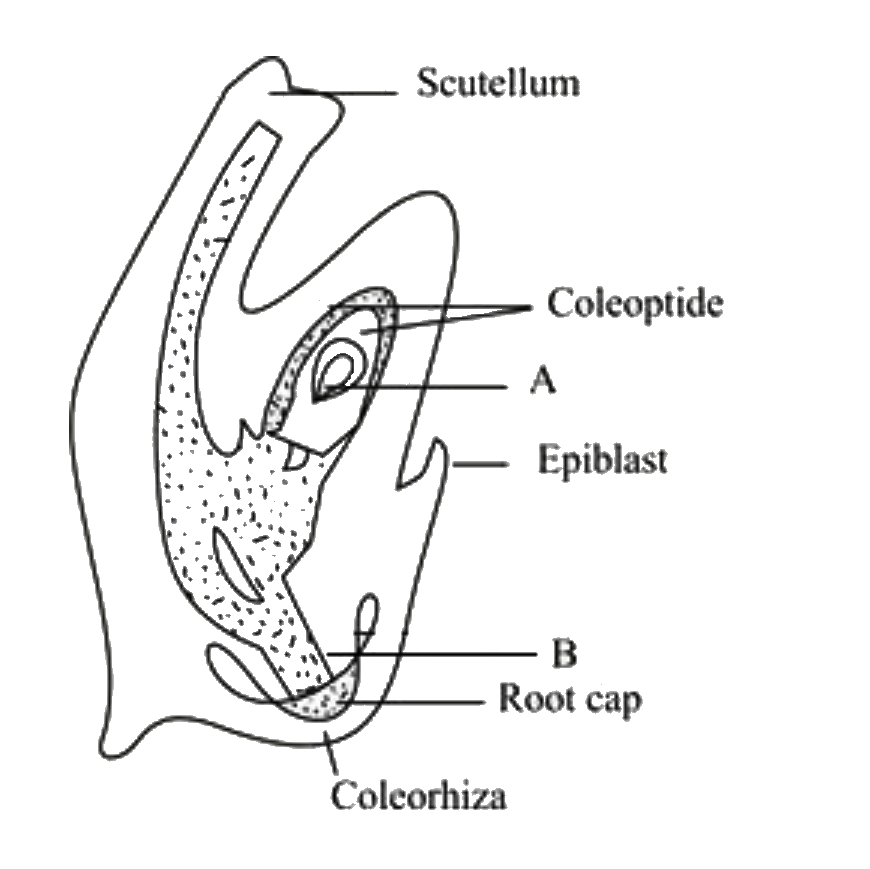Go through this figure of L.S. of an embryo of grass
 Solution in Kannada
Solution in Kannada
(i) Coleptile, (ii) Scutellum ,(iii) Radicle, (iv) Root cap, (v) Coleorhiza
(i) Coleptile, (ii) Scutellum ,(iii) Radicle, (iv) Coleorhiza, (v) Root cap,
(i) Scutellum , (i) Coleptile, (iii) Radicle, (iv) Root cap, (v) Coleorhiza
(i) Shoot apex, (ii) Scutellum ,(iii) Radicle, (iv) Coleorhiza, (v) Root cap
The correct Answer is:C
Step by step video & image solution for Go through this figure of L.S. of an embryo of grass by Biology experts to help you in doubts & scoring excellent marks in Class 12 exams.
Updated on:21/07/2023Topper's Solved these Questions
Similar Questions
Respiration is
View SolutionThe science of rearing,feeding, care, berrding and utilization of animals is called
View SolutionIn the embryos of a typical dicot and a grass, true homologous structures are
View SolutionIn the embryos of a typical dicot and a grass, true homologous structures are
View SolutionIn L.S. embryo of grass, which one shows correct labelling

View SolutionIn L.S. exmbryo of grass, which one shows correct labelling.
View SolutionGiven below a L.S. of an embryo of grass. Identify the labelled part (a), (b), (c) and (d) and select correct option about them :-

View SolutionIn the L.S. of an embryo of grass, the labels A and B are:

View SolutionObserve this diagram of L.S. of embryo of grass which of these labels represents the functional cotyledon and Rudimentary cotyledon ?
View SolutionIn the embryos of a typical dicot and a grass, true homologous structures are :
View SolutionIn the embryos of a typical dicot and a grass, true homologous structures are
View SolutionGo through this figure of L.S. of an embryo of grass

View SolutionIn the embryos of a typical dicot and a grass, true homologous structures are
View SolutionConsider the parts labelled in 1, 2,3, 4, and 5 respectively in the following diagram of L.S. of an embryo of grass and find out the correct sequence :

View SolutionIn the embryos of a typical dicot and a grass, true homologous structure are:
View Solution
